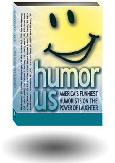Last week I was featured in the Deseret News in a wonderful piece by Doug Robinson. In this fun read, Doug pretty much sums up the last 17 years and how I managed to get to this point — running crazy fast, even against guys half my age. Thanks again to my major sponsors: Get Air Sports, Get Away Today and ASEA. Enjoy the read!
By way of introduction, Brad Barton is a motivational speaker, author and magician who urges audiences to “do something hard” and embrace challenges. For a man who is raising six kids, 40 beehives and 60 fruit trees, he seemed to have taken his own advice and then some, but he decided it wasn’t enough. He undertook a new challenge so physically demanding that it often left him in tears and literally sick with fatigue. Barton, a former five-time All-American distance runner at Weber State, took up competitive running again after a 17-year layoff — at the age of 48.

Brad takes the lead against his younger rivals in the late stages of their 3,000-meter steeplechase race, which resulted in an age-group world record. The Utahn has become a masters sensation. (Foon Fu, used with permission)
The short version of what happened next is that he clocked 9:06.68 in the 3,000-meter steeplechase at a meet in Tennessee early this summer and later a 4:17.54 mile in San Diego — times that mean nothing to most readers, so a little perspective is in order. His steeplechase time would have won that race at this year’s championship meets for the Western Athletic, Big Sky and Mountain West conferences. He knocked a whopping nine seconds off the previous 45-49 age-group world record set by Norway’s Nils Undersaker in 1984. As for his mile time: No man his age or older has ever come close to running so fast in that distance.
The Times of San Diego covered the event extensively under the headline: “Magical Olympian Mile: Brad Barton Oldest to Go Under 4:20.” The story quoted meet announcer Paul Greer’s reaction to Barton’s feat: “What we saw tonight was greatness. One of the best masters performances ever, at least in San Diego.”
Balding and gray, Barton toes the starting line against men half his age, some of them collegiate athletes in their athletic prime, most of them easily young enough to be his son. Videos of Barton’s feats have been posted on several running-related websites, some of them drawing as many as 21,000 hits. He has become a masters-level sensation.
Barton, who ran personal-best times of 8:31 in the steeplechase and 4:04 in the mile some 25 years ago, gave up the sport because of a hip injury that began shortly after he fell during the semifinals of the steeplechase in the 1992 U.S. Olympic trials. With degrees in psychology and business, he became a drug-prevention specialist for Weber Human Services. The job required him to make frequent speeches in the community about the evils of drugs, most of them at school assemblies. Deciding that he needed something more than words to capture the attention of his young audiences, he added magic tricks to his program, using sleight of hand as a metaphor for getting tricked into using drugs. The demand for his services became so great that he started his own professional speaking business. The business grew and he has made a full-time living as an international speaker.
“I preach the doctrine of getting better,” he says. “Let’s do something hard. Get on the learning curve. The happiest times of our lives are our most challenging times. Then we settle into an easier, comfortable life, but we need those challenges.”
While espousing such beliefs, Barton privately wondered if he had adequately challenged himself. He had an epiphany while watching a high school track meet that featured a mile race for coaches, an event that consists mostly of middle-aged men gasping through 1,760 painful yards while their athletes cheer them on. Barton decided to give it a try and returned to training at the age of 43.
Most middle-age people choose more sedate activities for their free time – golf, gardening, hiking, fishing, jogging. Barton chose the painful, intense, sweaty pursuit of middle-distance running, the training for which requires torturous repeat sprints of varying lengths on a track.
Speed training is difficult enough when you’re young; it’s another matter when you’re pushing 50. With the onset of age, many things happen to the heart, lungs, muscles and nervous system and none of them are good. It’s a gradual decline that begins in the early 30s.
“The rules all change,” says Barton.
For one thing, he could no longer do three hard track workouts a week, as he did in his youth; he could manage two and after each session he needed two or three days to recover. He put himself through agonizing workouts — two sets of 4-by-400 meters in 63 to 65 seconds with only 70 seconds rest, or a set of longer intervals ranging from 600 to 1,200 meters on the track totaling 5,000 meters. It is grueling work and after each training session he experienced “flu-like symptoms” that included achiness and a low-grade fever.
“It’s misery after a hard workout,” he says. “It takes days before I don’t feel sick. The workouts were so hard I cried sometimes.”

Brad coaxed his former coach at Weber State, Chick Hislop, out of retirement to guide his training program again.
Predictably, his body broke down. The first two years of his comeback were hampered by injuries. Deciding that he needed help, he coaxed Chick Hislop, the former Weber State and U.S. Olympic team coach, out of retirement in 2012 to direct his training.
“I couldn’t have done it without him,” says Barton, who reunited with his old coach more than two decades after they worked together at Weber State.
“It was a partnership,” says Hislop, now 78. “He would run training ideas by me and he’d run things by me and then we’d decide what to do. My biggest concern was that he would be overworked. The times he got injured were the times he did something that wasn’t what I recommended.”
Barton had modest goals initially — he wanted to break 4:30 in the mile — but Hislop had something more in mind. “No, let’s do some things that have never been done before,” the coach told him. “Let’s get the mile and steeplechase records.”
In 2012, Barton ran the fastest masters times in the nation for 1,500 and 3,000 meters, but his season ended with another injury, this time a broken foot. In 2013, he finally made it through a track season injury-free and set an M45 indoor mile world record of 4:16.83.
The good times continued this year. In June, he returned to New York and cut eight seconds off the M45 world record for 3,000 meters with a time of 8:26.15. In June he set the world record in the steeplechase in Nashville and two weeks later he narrowly missed the M45 world record in the mile — 4:16.09, set by Tony Young at the age of 46 in 2008 — but he became the oldest ever to run so fast. Afterward Barton collapsed and had to be helped off the track.
What’s next? He might be done racing for a time. His second running career has been time consuming, costly (his expenses were underwritten by three sponsors) and exhausting. “I am really tired,” he says. He also is at the upper end of the 45-49 age group, making records more difficult. “I’m trying to tell him to lay low till he’s 50,” says Hislop. “Then there will be a new set of records (in the 50-54 group) and he’ll be on the younger end of the age group.”

Brad set age records this year in the steeplechase, the 3,000-meter run and the mile. (Jeff Rodeman, used with permission)
Competitive running has taken time from family, business and his many other pursuits. Recovering from his final race of the year, Barton, who was raised on a cattle ranch in Idaho, spent a couple of days this week harvesting 11 buckets of honey from his beehives. He also tends and prunes fruit trees and manages four gardens at his home in South Ogden.
“He does everything big,” says his wife Alydia, a former Weber State runner herself who coaches track and cross-country at Ogden High. Barton frequently trained with her Ogden High runners. He also entered local collegiate races to sharpen his speed, sometimes entering the same meet in which his son Jacob, a senior distance runner at Utah State, was competing.
“I have a rule,” says Alydia. “He can’t race against Jacob. That’s not good for the relationship.”
The author of one book — “Beyond Illusions” — Barton plans to write a second book titled, “Getting Back on Track.” Whether he returns to the track again is another matter, but he already has made his mark with two competitive running careers in one lifetime.
Doug Robinson’s columns run on Tuesdays and Wednesdays. Email: drob@deseretnews.com




